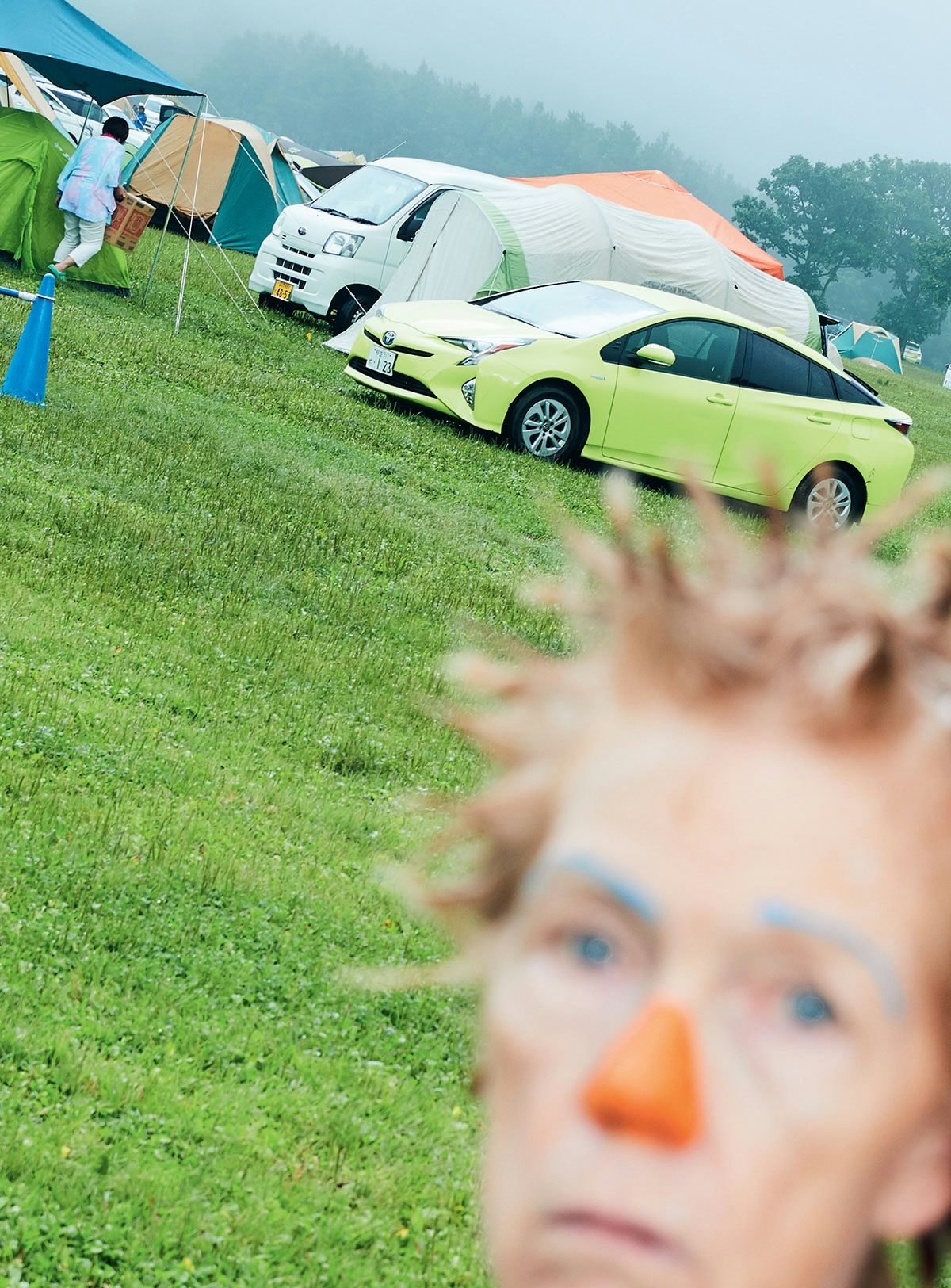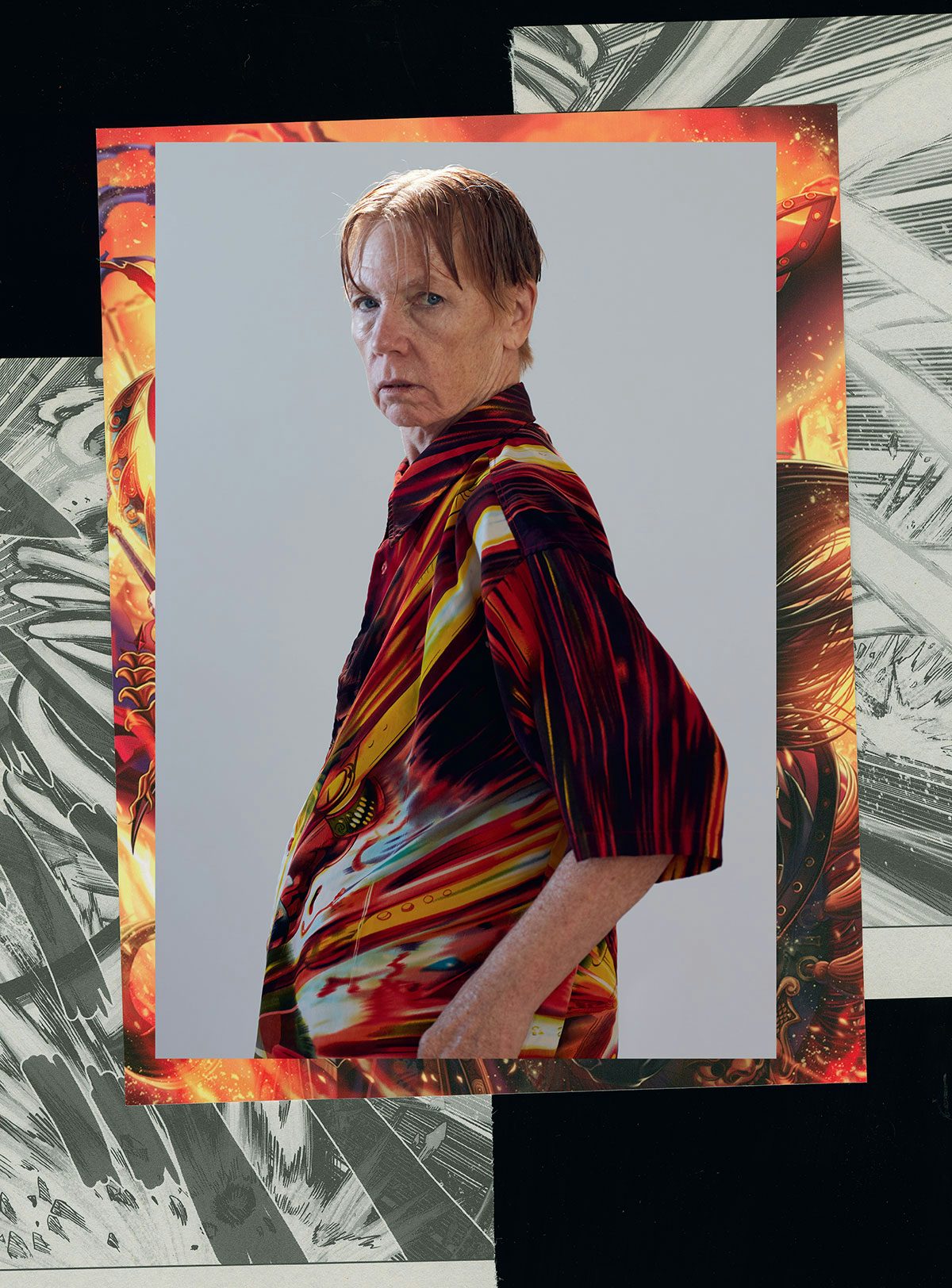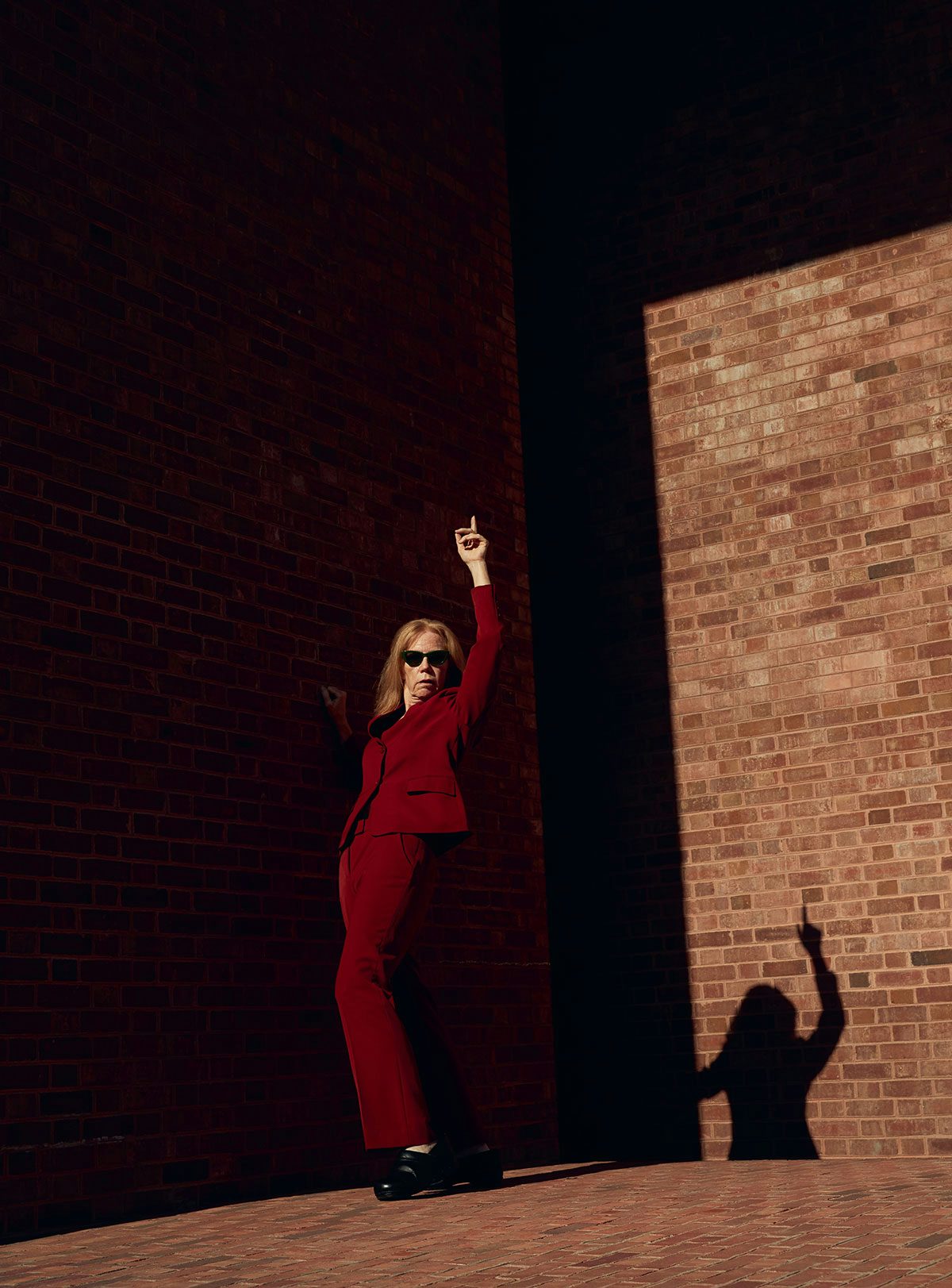Creative Collaborators: Charlie Engman and Kathleen McCain Engman
In a new series that looks into what makes for a successful creative partnership, we speak to photographer Charlie Engman and his mother, Kathleen McCain Engman, about their decade-long collaboration
The dynamic between model and photographer is one that’s been analysed and romanticised many times over the years. The exchange, in its most basic sense, takes the form of the photographer directing the model, the model interpreting those directions and together they try to solve the brief they’ve been given. On top of the skills and experience of both parties though, it’s also about the connection and chemistry between the model and photographer to turn a simple photo into an image that connects with people.
What can help this relationship flourish is familiarity but also a willingness from both the model and photographer to fully commit to the cause. For US photographer Charlie Engman, he’s found this readiness in his mother, Kathleen McCain Engman. Over the last decade, Charlie has photographed Kathleen in close collaboration, and while they’ve progressed into fully blown fashion shoots, magazine editorials and even runways, the collaboration started fairly naturally.
“When I was first discovering photography, I had an insatiable appetite for subjects. I photographed Mom because she was available and amenable,” says Charlie. “As with most relationships, making this body of work with her was a slow, accumulative process, punctuated by sporadic bursts of energy.”

For Kathleen, it felt organic in that it started as Charlie simply asking for help. “I’m not sure Charlie’s ever asked me to pose for him, per se,” says Kathleen. “My earliest recollection of being on this side of the lens is of me doing whatever I’m doing in my office or around the house and hearing Charlie call out: ‘Hey, are you busy right now? Could you come here for a minute?’.
“Ten minutes later I’m crouching in a hallway or on the living room floor with sunlight slanting in just so, and he’s laying fabric scraps and flowers around my face. Or maybe I’m towelling off after a shower when he calls out from his workspace, and I find myself stepping straight into my winter coat and a pair of boots as he tosses me a wig so we can run outside and catch a freak snowfall in the pine grove behind the split-level we briefly rented.”
When the time came for Charlie’s first formal Mom editorial shoot, I would have done pretty much anything I was physically capable of, in front of his camera
Their collaboration started in Evanston, a suburb in Chicago, where Charlie had returned home after college. Kathleen says that by the time she helped Charlie move to New York to take his photography further, it had come to feel natural to be “interrupted mid-stroll” and be directed into an impromptu shoot in the aisles of the supermarket.
It was a fashion spread in the Hungarian magazine The Room in 2012 that proved to be the catalyst for the photographer to start to include his mother in more than just personal projects, and it was also the first time Kathleen was introduced to the world as his muse. Soon the collaboration bled into his commercial and editorial work more and more, and now ten years later a slice of their work together has been collected into a monograph titled Mom, published by Edition Patrick Frey.
From flicking through these images, it’s clear this is not a documentary project, or a family album. Instead, Charlie sees his mother as a blank canvas to turn her into a plethora of strange and familiar characters that tap into fashion and fine art photography. In some images Kathleen is glossy and polished, in others there’s a rawness and beautiful awkwardness, and the contrasts both within and between the photographs is what keeps the work exciting.


Kathleen is aware of the taboo-breaking aspect of the work, both in some of the images and the fact that they are mother and son. But she believes her openness to Charlie’s ideas has made the work stronger. “I respect that some viewers, when they engage with this work, struggle with their own comfort levels and genuinely may wonder, ‘How could she have done that!’, I don’t share their reticence,” she says. “When the time came for Charlie’s first formal Mom editorial shoot, I would have done pretty much anything I was physically capable of, in front of his camera.” It’s a level of comfort and freedom that has come with modelling for Charlie over time, and her advice to others is to simply, “Stop looking in the mirror, and just let go.”
This attitude and energy is clearly what keeps Charlie inspired, though he acknowledges chemistry doesn’t always guarantee constant agreement and that the relationship between model and photographer is a tricky one. “One thing I like about photography is that it is mostly reactive. Every scenario brings its own joys and challenges. I have spent very little time on the scrutinised side of photography, but from my experience, it can be at once vulnerable, powerful, boring,” says Charlie. “Being able to balance and hold those feelings with another person is, I think, a matter of practice, performance, and luck. It is rare to have no conflict of agenda.”


With Kathleen, Charlie says there is an “infinite well of trust” between them and a built-in intimacy that gives both of them the freedom to create something new each time. Though he takes the lead creatively, Charlie says Kathleen is not far behind. “Generally speaking, the initiative is mine, but Mom is very active in her submission to the process,” he says.
What’s kept this exciting for the pair is that the collaboration has never felt forced, even if the photo shoots have developed and gotten more complex. “A decade-plus on and several runways under our belt, I still don’t think of any of this as ‘posing’,” says Kathleen. “My idea of heaven is sitting stock still while people cut, trim, and sculpt me into Charlie’s ideas, of which I am usually completely unaware. I put on whatever garment is handed me (or not) and I walk onto the set, climb the tree, or stumble down the alley.”
My idea of heaven is sitting stock still while people cut, trim, and sculpt me into Charlie’s ideas
The trust between Charlie and Kathleen on set is of course bolstered by their bond as mother and son, and it’s what makes their model/photographer relationship so interesting. When asked about how the mother/son dynamic works, Charlie sees it as something that simply strengthens the collaboration, rather than a topic for him to explore in the images themselves.
“For my part, I’m not that invested in the dynamic of mother and son. The roles of mother and child are social conventions that shift with context,” he says. “To me, this is an interaction between two individuals. The fact that she is my mother is both essential, in that it comes with a wealth of shared experience that enables that rare openness of agenda, and arbitrary, in that it’s not about her motherhood, per se.”


It’s similar for Kathleen, who feels happy to be part of the process and has never really thought of herself as a “traditional mother” to either Charlie or his actor sister Annie. “How many mothers get to say that they enjoy ‘doing what they’re told’ by their own children?” Kathleen says. “At the same time, while I’ve always been known as that comparatively non-traditional, hands-off mother among my peers, I can also be so overly-involved and over-bearing in my own children’s lives that they (each) have had to fire me repeatedly from my self-assigned jobs.”
Kathleen feels the collaboration is not quite a role reversal with Charlie, it’s more that a key quality that helps their relationship work is “elasticity”. Nothing is out of bounds and the expectations they have of each other come from a place of seeing each other as creative individuals, as opposed to being bound by their biological relationship. “That elasticity – and the tenacity that raising two creatives has injected into my already kinda-outside-the-box life – is something I will always be grateful for. I can only hope that my children continue to think so, too,” Kathleen says.

The blurring of these lines can of course present its challenges and Kathleen says she’s found it hard sometimes to remember that part of her role as a mother she feels is “to get out of the way” and let her children make their own way in the world. For instance, being a part of Charlie’s work, doesn’t mean that they’re a team who work and make decisions together.
“It can be a major challenge to maintain my proper distance as Charlie makes choices about his own career,” says Kathleen. “It’s not that I disagree with him, I just find it terribly hard to wait to be asked for my opinion! That said, as Charlie’s photobook moves into the world and my own presence becomes more widely shared, I think about actively seeking new opportunities of my own, and wonder whether or how that might present new challenges.”
[Our collaboration] has always been a form of play, as opposed to a singular project, so the collaboration continues
The ongoing body of work has fostered a complete reset for Kathleen and through this collaboration she’s been able to experience the results of her parenting in a way few people will. “It’s not a ‘reset’ like, ‘Oh, great, now I’m gonna be a model!’ Rather, I am newly aware of a fundamental sense of satisfaction with my life, which gives me confidence to take on whatever’s next,” explains Kathleen.
“I look not only at the work we’ve created, but at the individual responsible for the existence of this work, and I am profoundly satisfied that the person I parented is deeply good and humane, and open to the exigencies of the world, and of history. That keeps me challenged to re-examine my own life and raise the bar, every day.”

As the photographer, Charlie tries to take a more objective view, and sees their collaboration as an opportunity to push himself as a creative. “The inevitable idiosyncratic issues that come with working with family aside, the challenge and joy for me has been learning to look and really see,” he says. “It’s very easy to get lost in the interpersonal or, conversely, in the impersonal abstract. There’s a constant struggle to situate myself and my biases while maintaining openness both to Mom as an individual and to the third party audience that will eventually engage with the work.”
For Charlie and Kathleen the work they’ve created together has become a way for them to engage with each other and different types of audiences in new and surprising ways. “This is very gratifying for both of us, I think,” says Charlie. “[Our collaboration] has always been a form of play, as opposed to a singular project, so the collaboration continues….”










